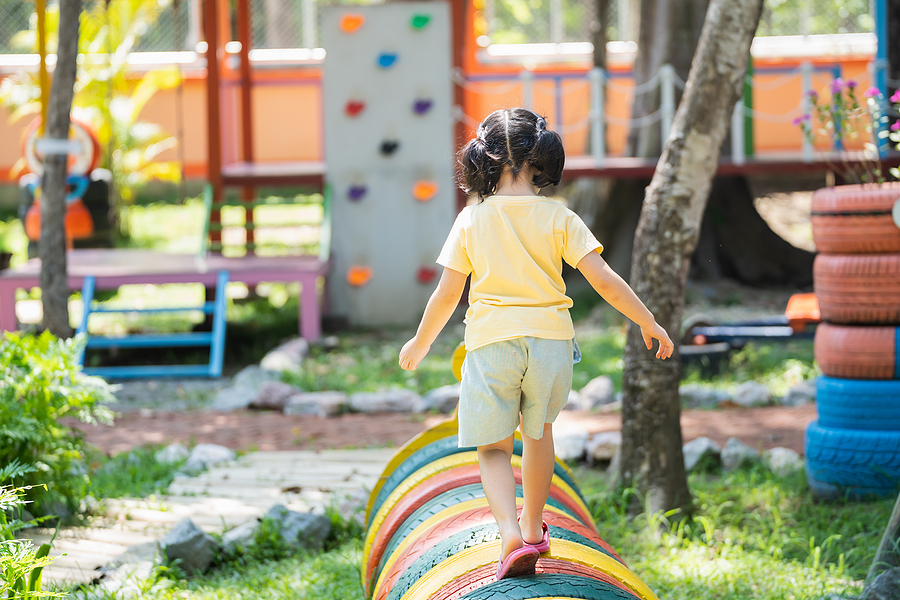Daycare facilities should provide children with a safe and nurturing environment while their parents or guardians work. Unfortunately, daycare negligence can occur, causing significant harm and danger. The following are five examples of daycare negligence that occur far too often.
The attorneys with Sand Law are standing by to help if you believe your child has suffered due to daycare negligence. Please call 651-291-7263 or contact us online for a free consultation.

1. Poorly Maintained Playground Equipment
Outdoor playtime is essential for children’s physical development, socialization, and overall well-being. However, when daycare facilities neglect to maintain their playground equipment properly, it can become a breeding ground for accidents and injuries. Broken swings, rusty slides, loose bolts, or uneven surfaces can pose significant risks for children. A child may fall from a malfunctioning swing, get caught in a broken slide, or trip on uneven surfaces, leading to injuries such as broken bones, cuts, or bruises.
Daycare providers have a crucial responsibility to ensure the safety of playground equipment. They should conduct regular inspections to identify any maintenance issues. They should also make prompt repairs or replacements to eliminate hazards and maintain a safe play environment. By neglecting proper maintenance, daycare facilities jeopardize children’s physical safety and expose themselves to legal liability for any resulting injuries.
2. Choking or Toxic Hazards Left Out
Young children naturally explore their surroundings using their mouths, making them particularly vulnerable to choking hazards. Daycare negligence can occur when small objects that pose a choking risk are left within reach of children. These objects can include small toys, coins, buttons, or even unsuitable food items such as whole grapes or nuts. Also, daycare personnel should store toxic substances like cleaning supplies, medications, or chemicals used in arts and crafts out of children’s reach to prevent accidental ingestion.
Daycare facility administrators and personnel must adhere to strict safety protocols and guidelines to minimize the risk of choking or ingestion hazards. Failure to address these hazards can lead to severe consequences, including life-threatening choking incidents or poisoning.
3. Not Feeding Children
Proper nutrition is vital for children’s growth, development, and overall health. Daycare facilities are responsible for providing nutritious meals and snacks to the children under their care. Negligence occurs when a daycare fails to meet these dietary requirements, potentially resulting in malnourishment or deficiencies in essential nutrients.
Inadequate food portions, regularly serving unhealthy or processed foods, or disregarding dietary restrictions or allergies can severely affect a child’s health. Improper nutrition can lead to developmental delays, weakened immune systems, poor concentration, and other physical and cognitive issues.
Daycare providers must develop appropriate meal plans that meet the nutritional needs of children in their care. This includes a variety of healthy foods, appropriate portion sizes, and consideration of any dietary restrictions or allergies. Regular communication with parents or guardians regarding their child’s dietary preferences and needs is crucial to ensure children get the nutrition they need.
4. Ignoring Children’s Needs
Daycare providers have a fundamental duty to attend to the emotional and physical needs of the children entrusted to their care. If daycare staff ignore or neglect a child’s cries for help, fail to change diapers promptly, or disregard signs of illness or injury, the parent may have grounds for a negligence lawsuit.
Infants and young children require frequent diaper changes to prevent discomfort and the risk of infections. Failure to do so can lead to painful diaper rashes and skin irritations.
Ignoring signs of illness or injury can also have severe consequences. Untreated illnesses can worsen and spread among children, leading to outbreaks of infectious diseases. Ignoring signs of injury, such as bruising, swelling, or complaints of pain, can result in undiagnosed fractures, sprains, or other medical issues.
Emotional neglect is equally harmful. Consistently ignoring a child’s need for attention, comfort, or affection can impact their well-being and development. Children thrive in an environment where their emotional needs are acknowledged and met. Emotional neglect can lead to insecurity, low self-esteem, and difficulties forming healthy relationships later in life.
Daycare providers must prioritize the emotional well-being of the children in their care. This includes:
- Actively engaging with children.
- Providing reassurance and comfort when needed.
- Creating a nurturing and supportive environment.
You may be eligible to take legal action if you feel the daycare facility is harming your child emotionally.
5. Dangerous Property Conditions
Daycare facilities must maintain a safe environment for children to minimize the risk of accidents or injuries. Negligence can arise when a daycare fails to address hazardous property conditions. These conditions may include wet floors, exposed electrical wiring, broken furniture, inadequate lighting, or insufficient safety measures such as handrails or childproofing.
Wet floors pose a significant slip and fall hazard, increasing the risk of head injuries, fractures, or sprains. Exposed electrical wiring can lead to electrical shocks or burns if children come into contact with them. Broken furniture, such as chairs or tables, can cause cuts or bruises if they collapse or have sharp edges. Inadequate lighting can contribute to accidents and make it difficult for caregivers to monitor children effectively.
Daycare providers must regularly inspect their premises for potential hazards and take prompt action to address them. This includes repairing or replacing broken furniture, ensuring proper electrical safety measures, promptly cleaning up spills, and maintaining a well-lit environment. Adequate childproofing measures should also be in place to prevent accidents and injuries.
Steps to Take if You Believe Your Child is Being Harmed in Daycare
If you suspect that your child is being harmed or neglected in a daycare facility, take the following steps to ensure their safety:
- Document any evidence: Keep a detailed record of incidents or observations that indicate daycare negligence. This can include photographs, written descriptions, or any relevant documents.
- Communicate with the daycare facility: Approach the daycare administration or staff to express your concerns. Provide them with an opportunity to address the issues and rectify any negligence. Maintain clear and respectful communication throughout this process.
- Report to regulatory authorities: There’s a chance the daycare facility won’t respond to your concerns. If this happens, report the negligence to the appropriate regulatory authorities. They’ll investigate the matter and take necessary actions to ensure the safety of the children.
- Seek medical attention if needed: If your child has suffered any physical harm or injuries due to daycare negligence, seek medical attention immediately. Document the medical treatment received and keep copies of any medical records or bills.
- Contact a daycare negligence lawyer: Speak with an attorney immediately if you believe your child has suffered harm due to daycare negligence. A daycare negligence lawyer can investigate the incident and collect the evidence necessary to help you obtain maximum compensation.
Contact Sand Law to Speak with a Daycare Negligence Lawyer ASAP
Sand Law has a team of skilled lawyers well-versed in daycare negligence laws and regulations. We have the knowledge and experience to assess the strength of your case, gather evidence, and build a solid legal strategy to hold the daycare facility accountable for its negligence. Schedule a free case review by using our online form or calling 651-291-7263.

